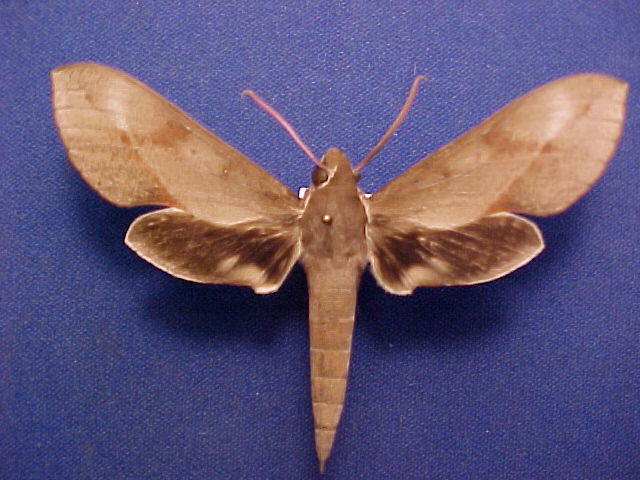Xylophanes rhodocera
|
|
Updated as per John Vriesi webpage
Updated as per personal communication with Ian Kitching, (St. Dom., Dominican Republic); March 13, 2017
Updated as per personal communication with Jean Haxaire, (La Vega, Dominican Republic); March 13, 2017
|
Xylophanes rhodocera
Walker, 1856

Xylophanes rhodocera courtesy of John Vriesi.

Xylophanes rhodocera, la Vega, Dominican Republic,
courtesy of Jean Haxaire
This site has been created by Bill Oehlke.
Comments, suggestions and/or additional information are welcomed by Bill.
TAXONOMY:
Family: Sphingidae, Latreille, 1802
Subfamily: Macroglossinae, Harris, 1839
Tribe: Macroglossini, Harris, 1839
Genus: Xylophanes Hubner [1819] ...........
Species: rhodocera Walker, 1856
|
DISTRIBUTION:
Xylophanes rhodocera moths (wingspan: mm) fly in Haiti (specimen type locality) and the Dominican Republic.
FLIGHT TIMES:
Xylophanes rhodocera adults probably brood continuously.
ECLOSION:
Pupae probably wiggle to surface from subterranean chambers just prior to eclosion.

Xylophanes rhodocera male (verso), St. Dom., Dominican Republic,
courtesy of Ian Kitching, through Creative Commons.
SCENTING AND MATING:Females call in the males with a pheromone released from a gland at the tip of the
abdomen. Males come in to lights very readily, but females are seldom taken in that way.
EGGS, LARVAE, PUPAE:
Larvae probably feed on plants of the Rubiaceae and Malvaceae families.
Moths emerge approximately one-two months after larvae pupate.
Use your browser "Back" button to return to the previous page.
Goto Main Sphingidae Index
Goto Macroglossini Tribe
Goto Central American Indices
Goto Carribean Islands
Goto South American Indices
Goto U.S.A. tables


